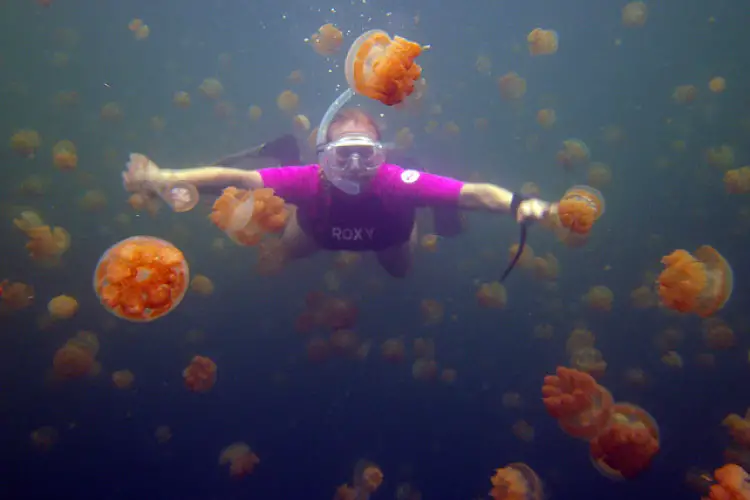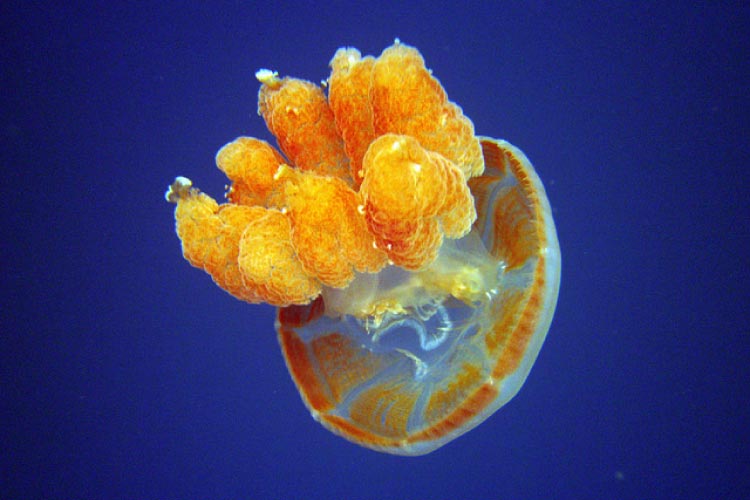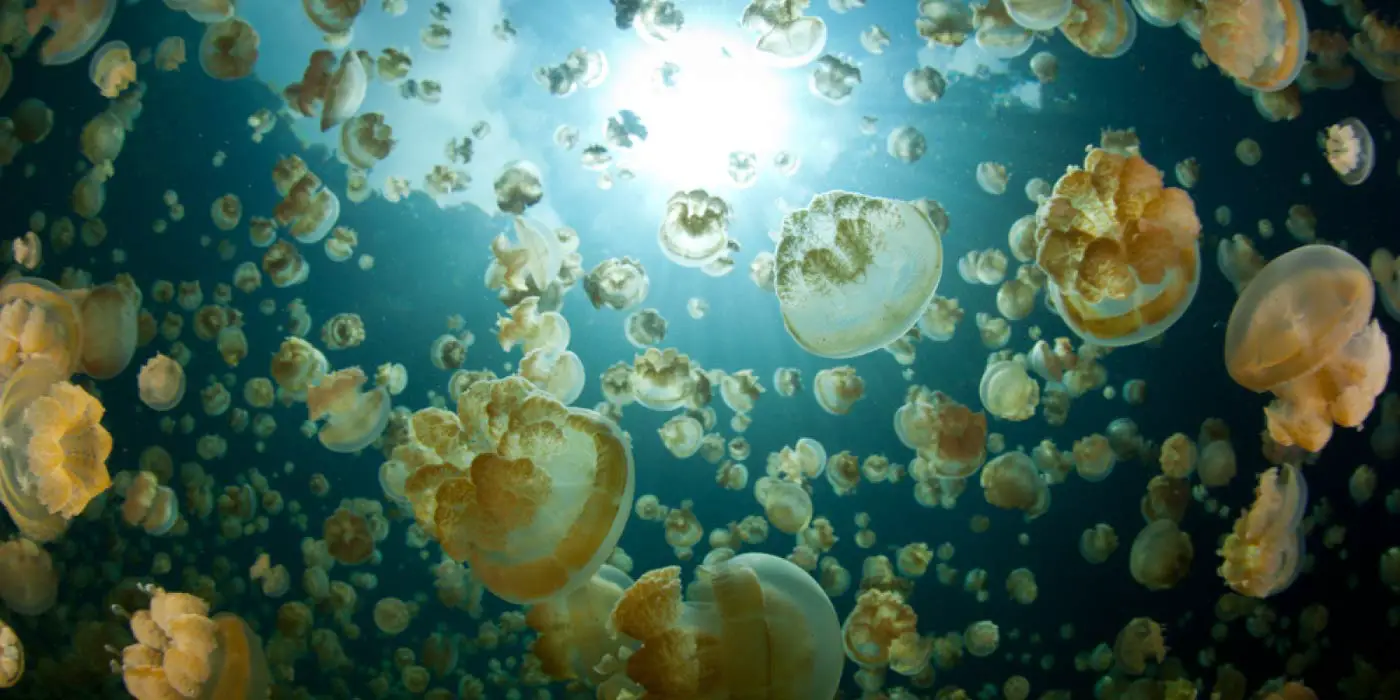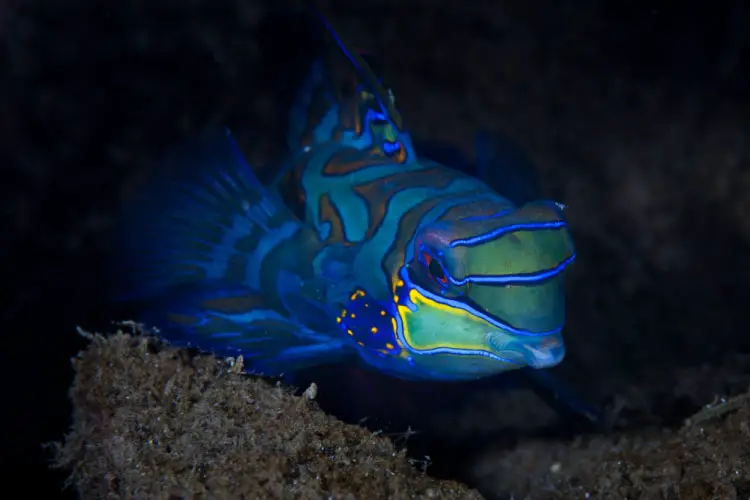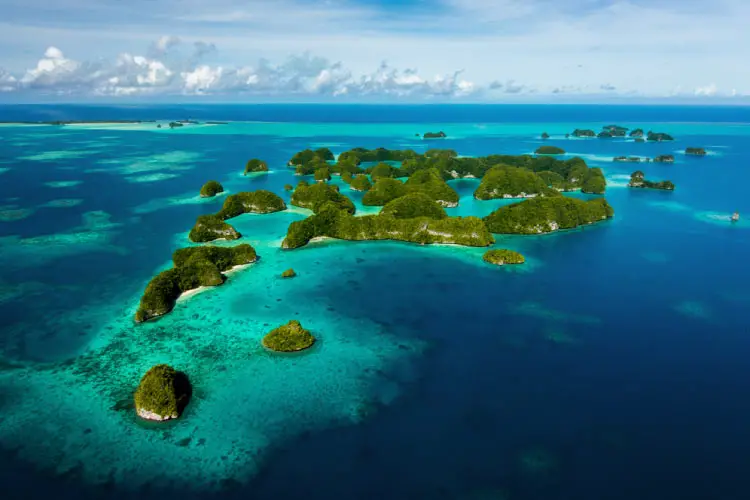The Rock Islands – Swim With Millions of Jellyfish in Palau
Almost unimaginably beautiful and packed with numerous natural wonders, Palau sits in the Pacific Ocean, on the western border of Micronesia, composed of hundreds of islands (although less than 10 of these are actually inhabited). It’s thought the earliest settlers on these islands arrived around 2500 BC, however they weren’t discovered by the western world until the Spanish explorers came across them in 1543. Sold to Germany in 1899, taken by the Japanese and then seized by the United States in world war II, Palau was finally declared a sovereign state in 1994. These days Palau is perhaps known best for its scuba diving; a haven for tropical wildlife, Palau features 13 species of shark, saltwater crocodiles, an unfathomable amount of jellyfish on top of an endless list of tropical fish. With an almost flawless weather system, this island nation sits outside the typhoon zone and is gifted with an average mean temperature of 27 ˚C (82˚F); its no surprise really that Palau has a thriving tourism industry and has been featured in many films depicting the classic tropical backdrop.
Although Palau might seem quite remote, it is easily accessible by air. Roman Tmetuchl International Airport, the entry point to Palau is located on Babeldaob Island, the largest Island in Palau and connected to Koror, via the Japan – Palau Friendship Bridge. One of the best ways to visit the outlying islands is with one of the many tour operators based in Koror, who can provide a wealth of information regarding the islands and act as your guide as you explore. Palau’s currency is the US dollar and you should expect to spend around $100 per day at the very least.
Dotted in the dark blue waters of the South Pacific, lie a group of lush green islands surrounded by dark blue and turquoise lakes. One of Palau’s most loved natural wonders is the Rock Islands, a UNESCO World Heritage Site consisting of over four hundred limestone islands encapsulating the largest concentration of marine lakes in the world. With over 385 coral species, the scenic view of the Rock Islands from both the air and sea-level is simply awe-inspiring, a myriad of blues, greens and the whitest white, dazzle your eyes. Although some travellers prefer to take a helicopter and view the Rock Islands by air, we highly recommend taking a guided tour by boat. Each island truly offers something different, from magnificent lagoons, remnants of abandoned stone villages, burial sites and rain forests, to hiking trails and mountain tops.
One of the highlights of the Rock Islands is Jellyfish Lake, one of the many marine lakes you’ll find nestled inside the limestone islands. Here you can swim and snorkel among the two species of Jellyfish, Golden Jellyfish and Moon Jellyfish. You might be wondering why on earth you would want to jump into a lake with all these creatures, but fear not, although the jellyfish do have stinging tentacles, they are not powerful enough to cause harm and you can swim freely among them. You should also pay a quick visit to the Milky Way Lake, where you’re free to jump in and smear yourself or your friends with milky mud, which can be easily rinsed off and is said to be fantastic for your skin. With so much to see and do in the Rock Islands, it wouldn’t be a surprise if you join the many travellers who end up coming back for more.
